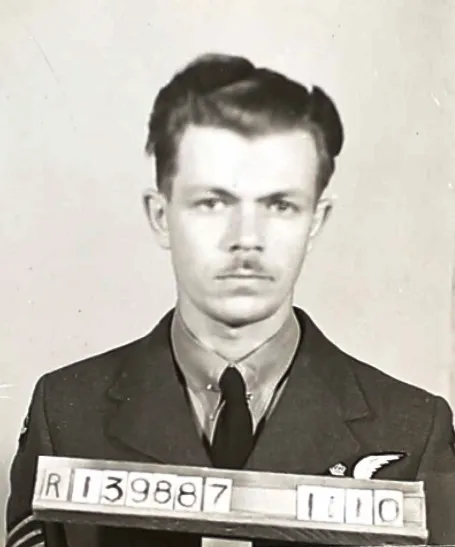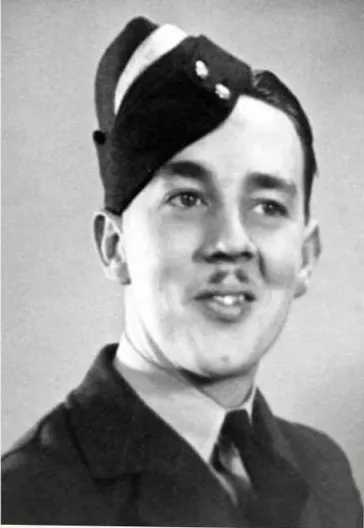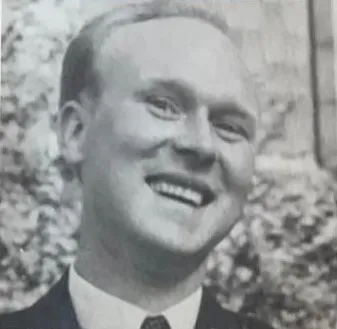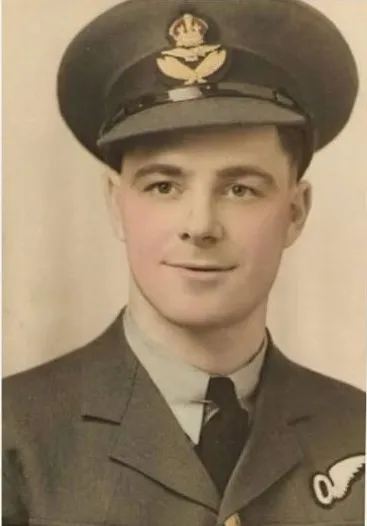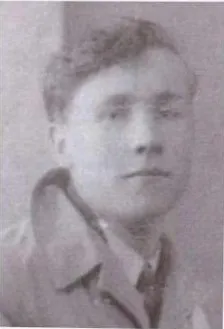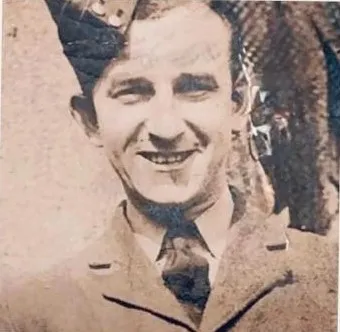Lindsay, Charles (Sergeant)
Prisoner of War 1944-January-03
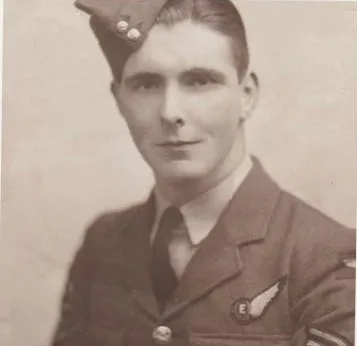

Birth Date: 1922
Born: Carstairs, Lanarkshire
Parents:
Spouse:
Home: Carstairs, Lanarkshire
Enlistment:
Enlistment Date: unkown date
Service
RAFVR
Unit
101 (B) Sqn- Squadron (RAF)
Mens Agitat Molem Mind over matter
Base
RAF Ludford Magna
Rank
Sergeant
Position
Service Numbers
1566826
Crew or Other Personnel
Lancaster DV269
Mission
Lancaster Mk.I/III DV269
Bombing Berlin Germany 1944-January-02 to 1944-January-03
101 (B) Sqn (RAF) RAF Ludford Magna
383 aircraft - 362 Lancasters, 12 Mosquitoes, 9 Halifaxes. The German control rooms followed the bombers all the way to Berlin, which was assessed as the target 40 minutes before Zero Hour. Night fighters were sent to a radio beacon between Hannover and Bremen but these fighters missed the bomber stream and did not come into action until they were directed to Berlin. Most of the bomber casualties were in the Berlin area. 27 Lancasters were lost, 7·0 per cent of the force. The casualties included IO Pathfinder aircraft; 156 Squadron, from Warboys, lost 5 of its 14 aircraft taking part in the raid.
This was another ineffective raid. Bombs were scattered over all parts of Berlin, with the local reports stressing that there were no large fires; the fire services were able to contain all fires soon after they started. 82 houses were destroyed and 36 people were killed. Industrial damage was insignificant..source: The Bomber Command War Diaries, Martin Middlebrook and Chris Everitt
Lancaster III DV269/G SR-M [ABC-equipped]
Took off from Ludford Magna on ABC duties. Homebound, shot down and crashed near Michendorf, 9 km NNE of Beelitz. Three were buried at Michendorf, but it is thought Sgt. Brown, the specialist operator was laid to rest elsewhere. All four now lie in the 1939-1945 War cemetery at Berlin. Albert William Francis Stephens, brother of Sergeant Stephens, died while on war service. Note: this Lancaster, one of two lost from the Squadron the previous night, carried a G suffix after the serial, an oblique stroke separating the digits from the suffix letter. This was standard on aircraft carrying secret equipment that warranted guarded access and requiring a 24-hour guard when not in the air.. Source W.R. Chorley's Bomber Command Losses 1944, page 23
There is a pdf file on the Leamington History Group website which has the following:
After bombing the target, the aircraft was attacked and hit twice by a German night-fighter or by flak and came down at Michendorff with four of the crew still on board. Derek and the other four crew men were reported to have bailed out of the aircraft and to have been taken prisoner but news soon came that Derek had not survived and had been buried in a local cemetery. Enquiries through the Red Cross never established the circumstances of Derek's death. The Air Bomber on board the Lancaster that fateful night was a Canadian, Flying Officer McClure who was sent to the POW camp at Stalag Luft III along with the other three crew and he later recalled that" Lazenby the pilot gave the order to abandon the damaged aircraft. It was then flying straight and level but was filled with smoke." The Flight Engineer, Sergeant Craig who was the third man to bail out of the stricken Lanc later recalled "Lazenby was alive and he stated over the intercom that he was wounded in the leg. Nothing was heard from Sergeants Brown, Beckett or Stephens"
Sergeant Gerald Alfred Beckett RCAF R/139887 KIA Berlin 1939-1945 War Cemetery Ref : 4. B. 26. Sergeant Charles Derek Brown RAF KIA Berlin 1939-1945 War Cemetery Ref: 5. J. 37. F/Lt Alan Lansdale Lazenby RAF KIA Berlin 1939-1945 War Cemetery Ref: Joint grave 4. B. 27. Sergeant Donald Henry Stephens RAF KIA Berlin 1939-1945 War Cemetery Ref: Joint grave 4. B. 27.
POWs: Flying Officer Weston Craig RAF POW Stalag Luft L3, Sagan and Belaria. Sergeant Charles Lindsay RAF POW Stalag 4b, Mühlberg Flying Officer James McClure RCAF J/22190 POW Stalag Luft L3, Sagan and Belaria. Sergeant Albert Avery Walton RAF POW Stalag 4b, Mühlberg
(Special thanks for their contribution to CASPIR to Ingrid Shepherd and Dawn Woodward, daughters of Sergeant Albert Walton, and Co-Authors of "From Bomber County to Berlin", detailing the last flight of Lancaster Mk.I/III DV269)
Lancaster serial: DV269
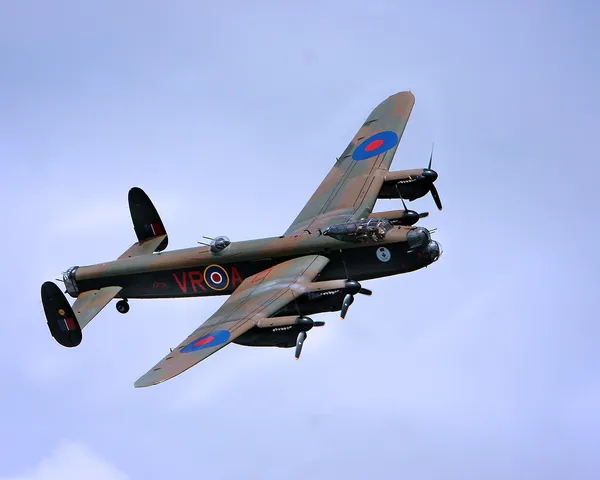
Canadian Warplane Heritage Museum
The Avro Lancaster is a British Second World War heavy bomber. It was designed and manufactured by Avro as a contemporary of the Handley Page Halifax, both bombers having been developed to the same specification, as well as the Short Stirling, all three aircraft being four-engined heavy bombers adopted by the Royal Air Force (RAF) during the same wartime era.
The Lancaster has its origins in the twin-engine Avro Manchester which had been developed during the late 1930s in response to the Air Ministry Specification P.13/36 for a capable medium bomber for "world-wide use". Originally developed as an evolution of the Manchester (which had proved troublesome in service and was retired in 1942), the Lancaster was designed by Roy Chadwick and powered by four Rolls-Royce Merlins and in one version, Bristol Hercules engines. It first saw service with RAF Bomber Command in 1942 and as the strategic bombing offensive over Europe gathered momentum, it was the main aircraft for the night-time bombing campaigns that followed. As increasing numbers of the type were produced, it became the principal heavy bomber used by the RAF, the Royal Canadian Air Force (RCAF) and squadrons from other Commonwealth and European countries serving within the RAF, overshadowing the Halifax and Stirling. Wikipedia
Unit Desciption
101 (B) Sqn Mens Agitat Molem ()
No. 101 Squadron RAF was originally formed within the RFC as a bomber unit in July 1917. It was disbanded in December 1919, then re-formed at Bircham Newton, Norfolk, in 1928, being the only operational squadron to fly the Boulton Paul Sidestrand and Overstrand aircraft. These were the first RAF bombers to have enclosed and power-operated turrets. When WWII broke out, the squadron was based at West Raynham, Norfolk, having now equipped with Bristol Blenheim aircraft. It was a reserve squadron until its first operation against Germany in July, 1940, and it later spent the greater part of its attacks on the barges in the channel and North Sea ports, which had been gathered for operation SEALION, the projected German invasion of Britain. In April 1941, a flight of the squadron's Blenheims was detached to Manston in Fighter Command's No. 11 Group, and from there it attacked enemy shipping during daylight, in an operation known as Channel Stop. In June, 1940 the squadron moved to Oakington, Cambridgeshire, where it remained until February 1942, when it moved to Bourne, Cambridgeshire.
During May and June 1941, the squadron converted to Vickers Wellingtons and flew with Bomber Command. It participated in all three 1000-bomber raids to Cologne, Essen and Bremen in 1942. In August 1942 the squadron moved to Stradishall, Suffolk, and in September to Holme-on-Spalding Moor, Yorkshire. Later in the year the squadron converted to Avro Lancaster aircraft, and continued the Bomber Command assault on Germany and Italy. In June 1943 the squadron moved again, to Ludford Magna, Lincolnshire. It participated in the raid on the rocket development centre at Peenemunde, and was fortunate enough to evade the enemy night fighters on that occasion.
In late 1943 the squadron was given a new function within Bomber Command, that of Radio Counter Measures, to attempt to cut the radio communications between the German night fighter controllers and the fighter pilots. Each aircraft was equipped with the radio device known as A.B.C. or Airborne Cigar. A special German-speaking radio operator in the aircraft used the ABC equipment to scan the appropriate frequencies, and when the German signals were detected, jamming was started by transmitting a warbling note. The Lancaster aircraft carrying ABC were easily distinguished because they carried three large aerials, two dorsally and one under the nose. In addition to the ABC equipment, the Lancasters carried a full bomb load. Unfortunately, because they transmitted strong signals, it was possible for night fighters to seek them out, and squadron losses were relatively high as a consequence; only three other Lancaster squadrons had higher losses. On the night of 5/6 June 1944, the squadron put up 21 ABC Lancasters to jam enemy wireless communications to prevent night fighters from being directed to the airborne invasion forces.
After its last operational mission, to Berchtesgaden in late April 1945, the squadron participated in operation MANNA, dropping food to help the staving populace of the Netherlands. It also was part of operation DODGE, bringing back British troops from Italy. The squadron moved to Binbrook, Lincolnshire in October 1945. It was successively equipped with Avro Lincoln, English Electric Canberra and Avro Vulcan aircraft.
